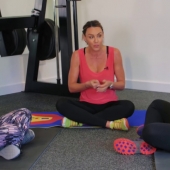There are a lot of different medical techniques that are used to induce labor. To induce labor means to speed up the labor process. Every person is different, every birth is different and the reality is that birth takes time. Sometimes, there are reasons that are required to speed up the labor process. These are very, very important questions to talk about when speaking with your midwife and your care provider. It's really important to understand what your care providers approach is to inducing or speeding up labor and when he or she might make those recommendations for doing so.
Some of the medical techniques that are used to induce labor are the artificial rupture of membranes, so they might break your water earlier than if it were to break on its own. Other types of medical inductions are using prostaglandin gels. Prostaglandin is something that is also in semen, so it's something that is used to soften and dilate the cervix. A prostaglandin gel, or suppository named Cervidil, is often used and inserted into the vagina to help thin and dilate the cervix. So, you want to speak with your care provider about the risks and benefits of Cytotek and all of these medical induction methods.
Another medical way to induce labor is with the use of Pitocin, or the synthetic form of oxytocin. Oxytocin is the love hormone. This is secreted when we look at someone we love, when we kiss someone we love, when we get a hug from somebody we love, during sex, during orgasm and during birth. Oxytocin is the hormone that helps to contract the uterus and make labor happen. So, Pitocin is the synthetic form of oxytocin and is often used in labor to induce or speed up the process of labor.
Remember, every woman's body is different. So, your labor may need some speeding up, but you also need to remember that labor takes time. So It's important to communicate with your care provider about what the best decision is for you and your baby. So these are some of the methods used to medically induce labor. It's really important to talk with your care provider about the risks and the benefits of each of these techniques.
- 8074 views













